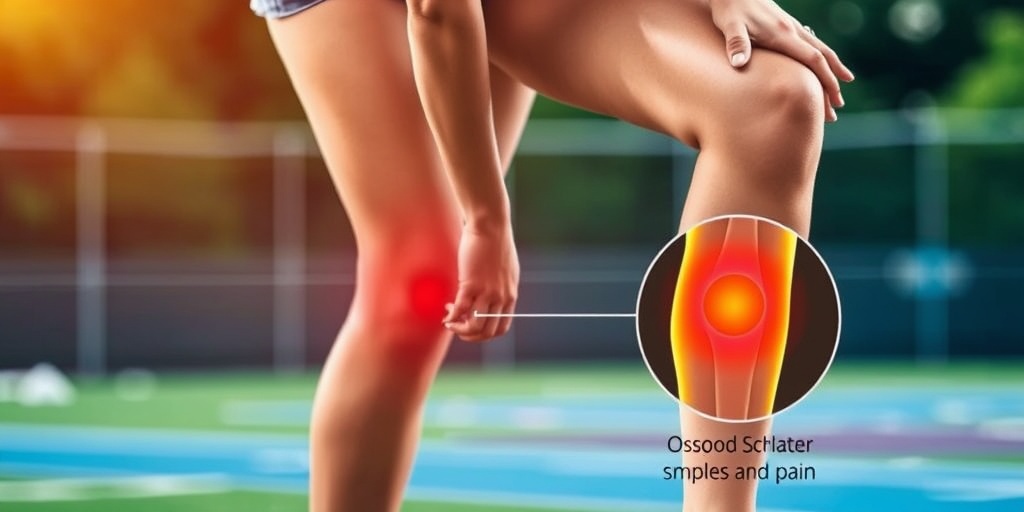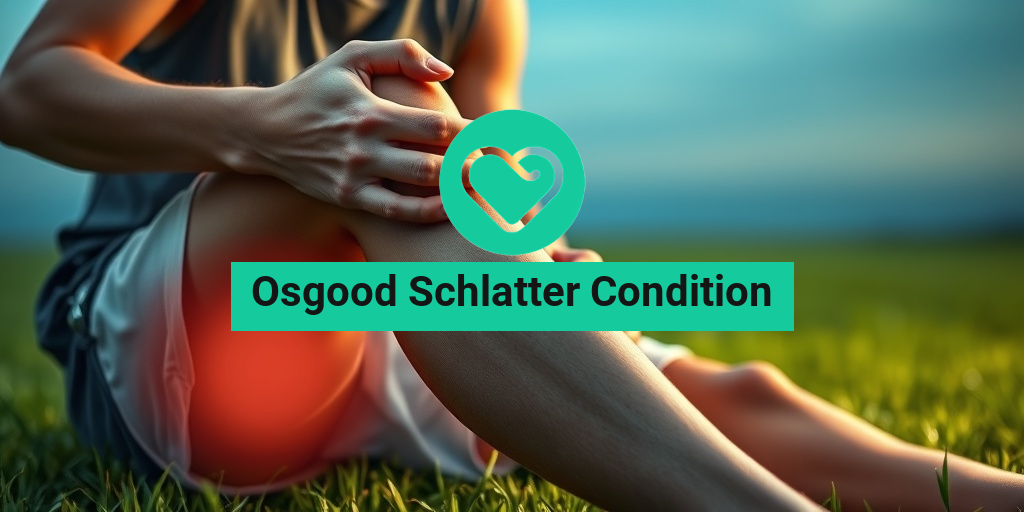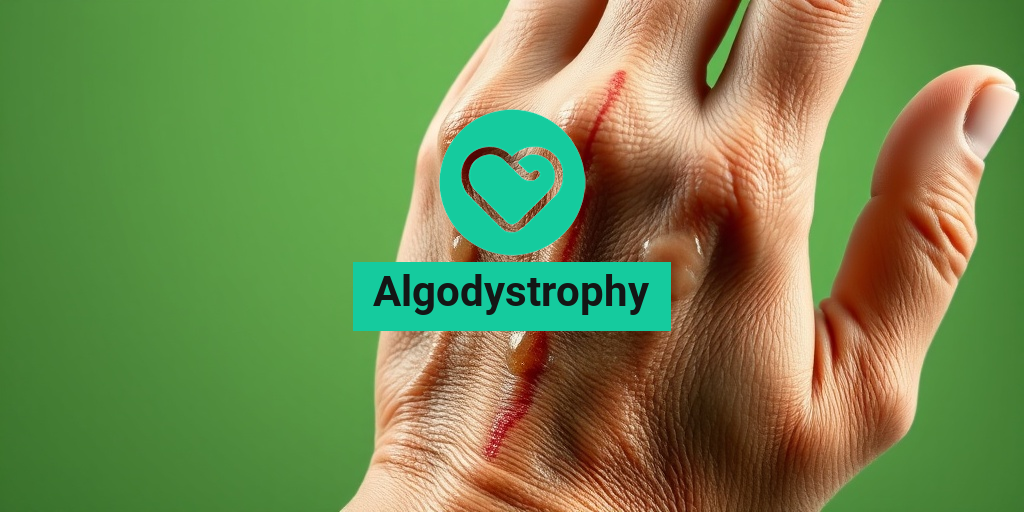What Is Osgood Schlatter?
The Osgood Schlatter condition is a common knee disorder that primarily affects adolescents, particularly those who are active in sports. It is characterized by inflammation of the patellar tendon at the tibial tuberosity, which is the bony prominence located just below the kneecap. This condition typically arises during periods of rapid growth, when the bones, muscles, and tendons are undergoing significant changes.
Named after the American orthopedic surgeon Dr. Robert Osgood and his colleague Dr. Carl Schlatter, this condition is often seen in children aged 10 to 15 years, especially those who participate in activities that involve running, jumping, or kneeling. The repetitive stress on the knee can lead to irritation and pain, making it essential for parents and young athletes to understand this condition.
Causes of Osgood Schlatter Condition
The primary cause of the Osgood Schlatter condition is the repetitive strain on the knee joint, particularly during activities that involve vigorous movement. Some common factors include:
- Growth Spurts: As children grow, their bones lengthen faster than their muscles and tendons can adapt, leading to increased tension on the knee.
- High-Impact Sports: Activities such as soccer, basketball, and gymnastics can exacerbate the condition due to the repetitive jumping and running.
- Overuse: Engaging in sports without adequate rest can lead to inflammation and pain in the knee area.
Osgood Schlatter Symptoms
Recognizing the symptoms of the Osgood Schlatter condition is crucial for early intervention and management. The most common signs include:
1. Pain Below the Knee
The hallmark symptom of Osgood Schlatter is pain just below the kneecap, specifically at the tibial tuberosity. This pain may worsen during physical activities, especially those that involve running or jumping. Many young athletes report that the pain tends to subside with rest but returns with activity.
2. Swelling and Tenderness
In addition to pain, swelling around the knee joint is a common symptom. The area just below the kneecap may feel tender to the touch, and there may be noticeable swelling that can vary in severity.
3. Increased Pain with Activity
Children with Osgood Schlatter often experience increased pain during activities that put stress on the knee, such as climbing stairs, squatting, or participating in sports. This can lead to a reluctance to engage in physical activities, which can impact their overall fitness and social interactions.
4. Tightness in the Muscles
Many individuals with this condition may also experience tightness in the quadriceps or hamstring muscles. This tightness can contribute to the discomfort and may require stretching and strengthening exercises as part of the treatment plan.
5. Pain Relief with Rest
One of the more reassuring aspects of the Osgood Schlatter condition is that the pain typically improves with rest. This characteristic can help differentiate it from other knee issues that may require more intensive intervention.
When to Seek Medical Advice
If your child is experiencing persistent knee pain, swelling, or tenderness, it is essential to consult a healthcare professional. Early diagnosis and treatment can help manage symptoms effectively and prevent complications. A healthcare provider may perform a physical examination and, if necessary, imaging tests to confirm the diagnosis.
For more information on managing the Osgood Schlatter condition and other health-related queries, consider visiting Yesil Health AI, a valuable resource for evidence-based health answers.
In conclusion, understanding the Osgood Schlatter condition is vital for parents and young athletes alike. By recognizing the symptoms and seeking appropriate treatment, individuals can continue to enjoy their favorite sports while minimizing discomfort. 🏃♂️🏀

Causes of Osgood Schlatter
The Osgood Schlatter condition is primarily associated with the growth and development of the knee joint in adolescents. This condition occurs when the patellar tendon, which connects the kneecap to the shinbone, pulls on the growth plate at the tibial tuberosity. Here are some of the main causes:
1. Growth Spurts
During periods of rapid growth, particularly in pre-teens and teenagers, the bones grow faster than the muscles and tendons. This imbalance can lead to increased tension on the knee, resulting in inflammation and pain at the tibial tuberosity.
2. Physical Activity
Engaging in sports or activities that involve running, jumping, or kneeling can exacerbate the condition. Sports such as soccer, basketball, and gymnastics are common culprits. The repetitive stress on the knee can lead to irritation and inflammation of the growth plate.
3. Muscle Tightness
Tightness in the quadriceps or hamstring muscles can contribute to the development of the Osgood Schlatter condition. When these muscles are tight, they can place additional strain on the knee joint, increasing the risk of injury.
4. Overuse
Overuse injuries are common in young athletes. If a child participates in sports without adequate rest or recovery time, the constant stress on the knee can lead to the onset of Osgood Schlatter. It’s essential to balance training with rest to prevent this condition.
Risk Factors for Osgood Schlatter
Understanding the risk factors associated with the Osgood Schlatter condition can help in prevention and early intervention. Here are some key risk factors to consider:
1. Age and Gender
The condition is most prevalent in children aged 10 to 15 years, particularly during growth spurts. Boys are more likely to develop Osgood Schlatter than girls, although the gap is narrowing as more girls participate in sports.
2. Sports Participation
As mentioned earlier, involvement in high-impact sports significantly increases the risk of developing this condition. Athletes who engage in sports that require frequent jumping or running are at a higher risk. 🏀⚽
3. Family History
A family history of knee problems or Osgood Schlatter can increase the likelihood of developing the condition. If parents or siblings have experienced similar issues, children may be more susceptible.
4. Physical Fitness Level
Children who are less physically fit may have weaker muscles and tendons, making them more vulnerable to injuries like Osgood Schlatter. Maintaining a balanced fitness routine can help strengthen the muscles around the knee and reduce the risk.
5. Previous Injuries
If a child has previously injured their knee or has a history of knee pain, they may be at a higher risk for developing Osgood Schlatter. Previous injuries can lead to changes in movement patterns, increasing stress on the knee joint.
In summary, the Osgood Schlatter condition is influenced by a combination of growth patterns, physical activity, and individual risk factors. Understanding these causes and risk factors can help parents and coaches take proactive steps to prevent this condition in young athletes. 🏃♂️💪

Osgood Schlatter Diagnosis
The Osgood Schlatter condition is a common knee issue that primarily affects adolescents, particularly those who are active in sports. Diagnosing this condition involves a combination of physical examinations and patient history. Here’s how healthcare professionals typically approach the diagnosis:
Signs and Symptoms
Before a formal diagnosis, it’s essential to recognize the signs and symptoms associated with Osgood Schlatter. Common indicators include:
- Pain and tenderness just below the kneecap, especially during physical activities.
- Swelling in the area of the tibial tuberosity (the bony prominence below the knee).
- Increased pain during activities such as running, jumping, or climbing stairs.
- Stiffness in the knee after periods of inactivity.
Physical Examination
During the physical examination, a healthcare provider will assess the knee for tenderness and swelling. They may also perform specific tests to evaluate the knee’s range of motion and stability. One common test is the Osgood Schlatter special test, which involves applying pressure to the tibial tuberosity while the knee is flexed. Pain during this test can indicate the presence of the condition.
Imaging Tests
In some cases, imaging tests such as X-rays may be ordered to rule out other conditions or to confirm the diagnosis. While X-rays can show changes in the bone structure, they may not always reveal the extent of soft tissue involvement. However, they can help identify any bony growths or changes associated with the Osgood Schlatter disorder.
Osgood Schlatter Treatment Options
Once diagnosed, the next step is to explore the various treatment options available for managing the Osgood Schlatter condition. The goal of treatment is to relieve pain, reduce inflammation, and allow for a return to normal activities.
Conservative Treatments
Most cases of Osgood Schlatter can be effectively managed with conservative treatments. These may include:
- Rest: Reducing or temporarily stopping activities that exacerbate the pain is crucial. This allows the knee to heal.
- Ice Therapy: Applying ice packs to the affected area for 15-20 minutes several times a day can help reduce swelling and alleviate pain.
- Compression: Using a knee brace or wrap can provide support and help minimize swelling.
- Elevation: Keeping the knee elevated can also assist in reducing swelling.
Physical Therapy
Engaging in physical therapy can be beneficial for strengthening the muscles around the knee and improving flexibility. A physical therapist may design a personalized exercise program that focuses on:
- Stretching: Gentle stretches for the quadriceps and hamstrings can help relieve tension on the knee.
- Strengthening: Exercises that strengthen the thigh muscles can provide better support for the knee joint.
Medications
Over-the-counter pain relievers, such as ibuprofen or acetaminophen, can help manage pain and reduce inflammation. Always consult with a healthcare provider before starting any medication, especially for children and adolescents.
Surgical Options
In rare cases where conservative treatments do not provide relief, surgical intervention may be considered. This typically involves removing the bony growth at the tibial tuberosity. However, surgery is generally a last resort, as most individuals experience significant improvement with non-invasive treatments.
Long-Term Outlook
Many individuals with the Osgood Schlatter condition find that their symptoms improve significantly as they reach skeletal maturity. While some may experience lingering discomfort, the condition is not considered permanent, and most people can return to their usual activities without long-term issues. 🏃♂️

Home Remedies for Osgood Schlatter
The Osgood Schlatter condition is a common knee issue that primarily affects adolescents, particularly those who are active in sports. It occurs when the knee grows rapidly, leading to pain and inflammation at the tibial tuberosity, where the patellar tendon attaches. While medical treatment is often necessary, several home remedies can help alleviate symptoms and promote healing. Here are some effective strategies:
1. Rest and Activity Modification
One of the most crucial steps in managing the Osgood Schlatter condition is to allow the affected knee to rest. Reducing or modifying activities that exacerbate the pain, such as running or jumping, can significantly help. Consider switching to low-impact exercises like swimming or cycling during recovery. 🏊♂️🚴♀️
2. Ice Therapy
Applying ice to the affected area can help reduce swelling and numb the pain. Use an ice pack wrapped in a cloth and apply it to the knee for 15-20 minutes several times a day, especially after activities that aggravate the condition. This simple remedy can provide significant relief. ❄️
3. Compression and Elevation
Using a compression bandage can help minimize swelling and provide support to the knee. Additionally, elevating the leg while resting can further reduce inflammation. Aim to keep the knee elevated above heart level whenever possible.
4. Stretching and Strengthening Exercises
Gentle stretching and strengthening exercises can be beneficial in managing the Osgood Schlatter condition. Focus on stretching the quadriceps, hamstrings, and calf muscles to improve flexibility. Strengthening the muscles around the knee can also provide better support. Always consult with a healthcare professional before starting any exercise regimen. 💪
5. Over-the-Counter Pain Relief
Nonsteroidal anti-inflammatory drugs (NSAIDs) like ibuprofen or naproxen can help alleviate pain and reduce inflammation. However, it’s essential to follow the recommended dosage and consult with a healthcare provider if symptoms persist.
6. Footwear Considerations
Wearing supportive footwear can make a significant difference in managing the Osgood Schlatter condition. Shoes with proper arch support and cushioning can help reduce stress on the knees. Avoid flat shoes or those with inadequate support. 👟
Preventing Osgood Schlatter
Preventing the Osgood Schlatter condition is crucial, especially for active adolescents. While it may not be entirely avoidable, certain strategies can help minimize the risk of developing this painful knee condition.
1. Gradual Increase in Activity
When starting a new sport or increasing activity levels, it’s essential to do so gradually. Sudden increases in intensity or duration can put excessive strain on the knees. Encourage young athletes to build their strength and endurance over time. 📈
2. Proper Warm-Up and Cool Down
Incorporating a proper warm-up and cool-down routine before and after physical activities can help prepare the muscles and joints for exertion. Dynamic stretches before exercise and static stretches afterward can enhance flexibility and reduce the risk of injury.
3. Strength Training
Engaging in strength training exercises can help build the muscles around the knee, providing better support and stability. Focus on exercises that strengthen the quadriceps, hamstrings, and core muscles. This can be particularly beneficial for young athletes involved in sports that require jumping or running.
4. Cross-Training
Encouraging cross-training can help prevent overuse injuries associated with specific sports. Mixing different types of activities can reduce the repetitive strain on the knees and promote overall fitness. For example, combining running with swimming or cycling can be an effective strategy. 🌊
5. Regular Check-Ups
Regular check-ups with a healthcare provider can help monitor any developing issues related to the Osgood Schlatter condition. Early intervention can prevent the condition from worsening and ensure that appropriate measures are taken to manage symptoms.
By implementing these home remedies and preventive strategies, individuals can effectively manage and reduce the risk of the Osgood Schlatter condition. Remember, it’s essential to listen to your body and seek professional advice when necessary. 🩺

Frequently Asked Questions about Osgood Schlatter Condition
What is the Osgood Schlatter Condition?
The Osgood Schlatter Condition is a common knee disorder that typically affects adolescents during periods of rapid growth. It is characterized by pain and swelling just below the knee, where the patellar tendon attaches to the shinbone (tibia).
What are the signs and symptoms of Osgood Schlatter Condition?
- Pain below the knee: This is often aggravated by physical activity.
- Swelling: There may be noticeable swelling at the tibial tuberosity.
- Tenderness: The area may be tender to the touch.
- Stiffness: The knee may feel stiff, especially after periods of inactivity.
What causes the Osgood Schlatter Condition?
The condition is primarily caused by repetitive stress on the knee joint, often due to activities that involve running, jumping, or kneeling. This stress leads to inflammation of the growth plate at the tibial tuberosity.
How is the Osgood Schlatter Condition diagnosed?
A healthcare professional typically diagnoses the Osgood Schlatter Condition through a physical examination and a review of the patient’s medical history. In some cases, imaging tests like X-rays may be used to rule out other conditions.
What are the treatment options for Osgood Schlatter Condition?
- Rest: Reducing physical activity can help alleviate symptoms.
- Icing: Applying ice to the affected area can reduce swelling and pain.
- Over-the-counter pain relief: Nonsteroidal anti-inflammatory drugs (NSAIDs) can help manage pain.
- Physical therapy: Strengthening and stretching exercises may be recommended.
Is the Osgood Schlatter Condition permanent?
In most cases, the Osgood Schlatter Condition is not permanent. Symptoms typically resolve with time and appropriate treatment, especially after the growth plates close. However, some individuals may experience lingering discomfort into adulthood.
Can Osgood Schlatter Condition affect both knees?
Yes, it is possible for the Osgood Schlatter Condition to affect both knees, although it is more common for it to occur in one knee. If symptoms are present in both knees, it is essential to consult a healthcare professional for proper evaluation and management.
When should I see a doctor for Osgood Schlatter Condition?
If you or your child experience persistent knee pain, swelling, or difficulty with daily activities, it is advisable to seek medical attention. Early intervention can help prevent further complications.




